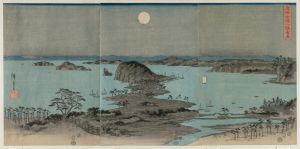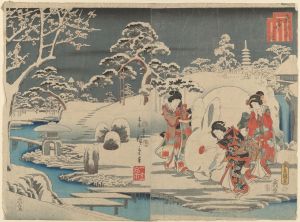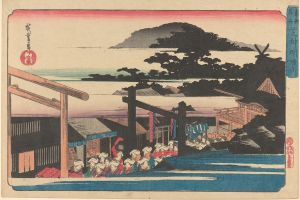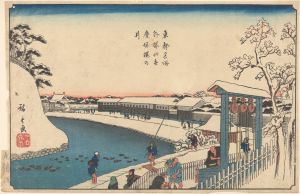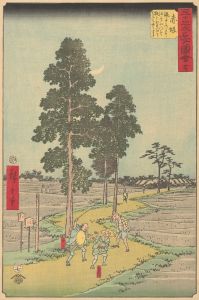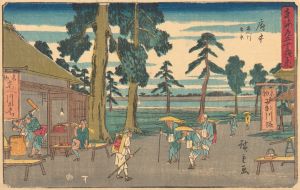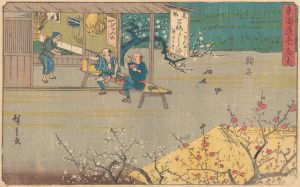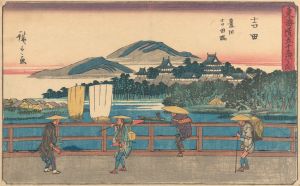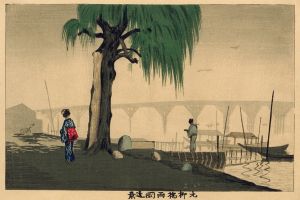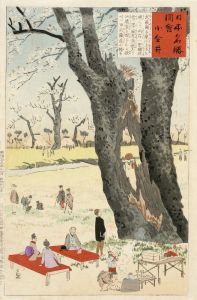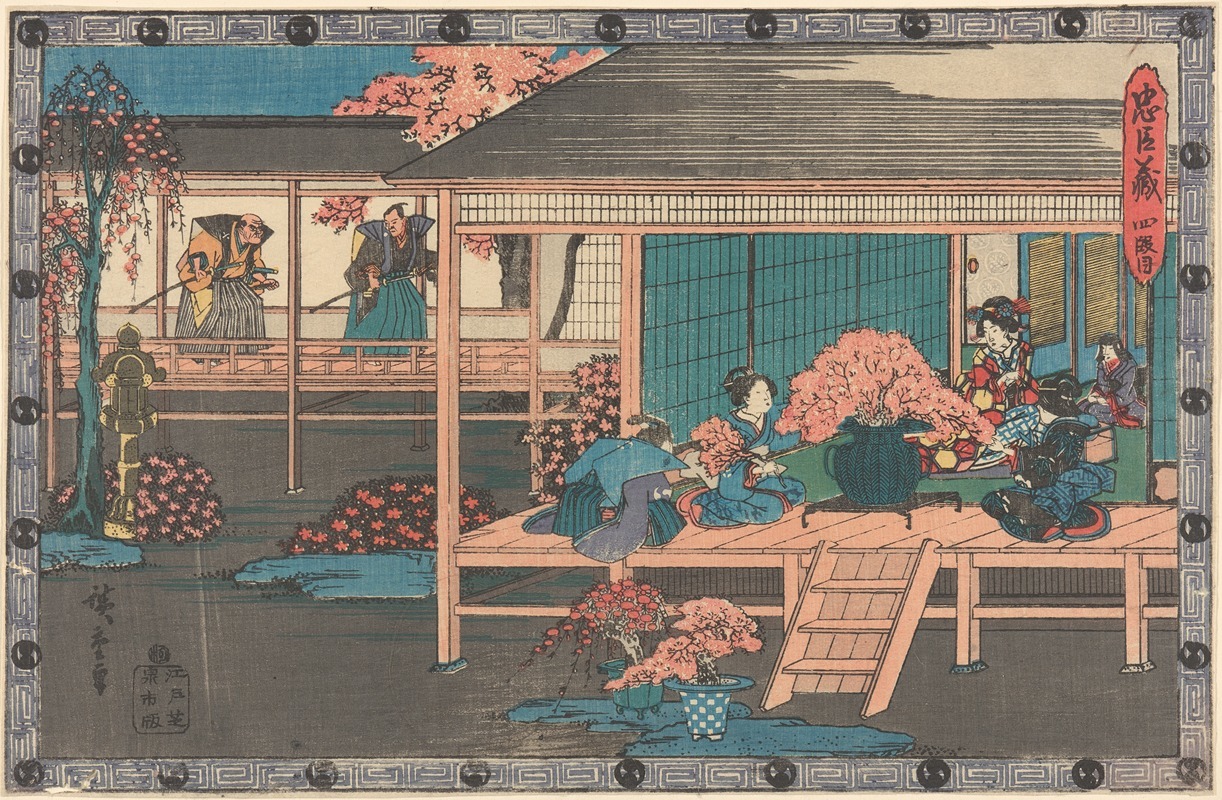
Two Ronin Looking into Yoshiwara
A hand-painted replica of Andō Hiroshige’s masterpiece Two Ronin Looking into Yoshiwara, meticulously crafted by professional artists to capture the true essence of the original. Each piece is created with museum-quality canvas and rare mineral pigments, carefully painted by experienced artists with delicate brushstrokes and rich, layered colors to perfectly recreate the texture of the original artwork. Unlike machine-printed reproductions, this hand-painted version brings the painting to life, infused with the artist’s emotions and skill in every stroke. Whether for personal collection or home decoration, it instantly elevates the artistic atmosphere of any space.
Andō Hiroshige, a renowned Japanese ukiyo-e artist of the Edo period, is celebrated for his landscapes and depictions of everyday life in Japan. One of his works, "Two Ronin Looking into Yoshiwara," exemplifies his skill in capturing the essence of Japanese culture and society during this era. This artwork is part of Hiroshige's broader oeuvre that often explores themes of travel, nature, and the human experience within the context of Edo-period Japan.
"Two Ronin Looking into Yoshiwara" is a woodblock print that depicts two ronin, or masterless samurai, gazing into the Yoshiwara district. Yoshiwara was a famous pleasure district in Edo (modern-day Tokyo), known for its entertainment, including geisha, courtesans, and various forms of artistic expression. The district was a popular subject in ukiyo-e art, as it symbolized both the allure and the transient nature of pleasure and beauty.
Hiroshige's print captures the ronin at a moment of contemplation, standing outside the bustling district. The composition of the artwork is carefully balanced, with the figures of the ronin positioned in the foreground, creating a sense of depth and perspective. The background likely features elements typical of Hiroshige's style, such as detailed architectural structures and natural scenery, although specific details of this print are not extensively documented.
The use of color in Hiroshige's prints is notable for its subtlety and effectiveness in conveying mood and atmosphere. In many of his works, Hiroshige employed a limited color palette, utilizing shades of blue, green, and earthy tones to evoke a sense of tranquility and introspection. This approach would have been consistent with the aesthetic values of the time, emphasizing harmony and balance.
Hiroshige's work, including "Two Ronin Looking into Yoshiwara," is characterized by its attention to detail and its ability to capture the fleeting beauty of a moment. His prints often reflect the cultural and social dynamics of Edo-period Japan, offering insights into the lives of both the common people and the samurai class. The ronin, as depicted in this print, represent a class of warriors who, without a master, navigated a complex social landscape, often facing uncertainty and existential reflection.
While specific details about the creation and reception of "Two Ronin Looking into Yoshiwara" are not extensively recorded, Hiroshige's influence on the art world is well-documented. His work has inspired countless artists, both in Japan and internationally, and continues to be celebrated for its artistic and cultural significance. Hiroshige's ability to convey emotion and narrative through his prints has cemented his legacy as one of the great masters of ukiyo-e.
In summary, "Two Ronin Looking into Yoshiwara" is a testament to Hiroshige's mastery of the ukiyo-e form, capturing a moment of introspection against the backdrop of one of Edo's most iconic districts. Through his art, Hiroshige offers a window into the world of Edo-period Japan, reflecting the complexities and beauty of its society.





